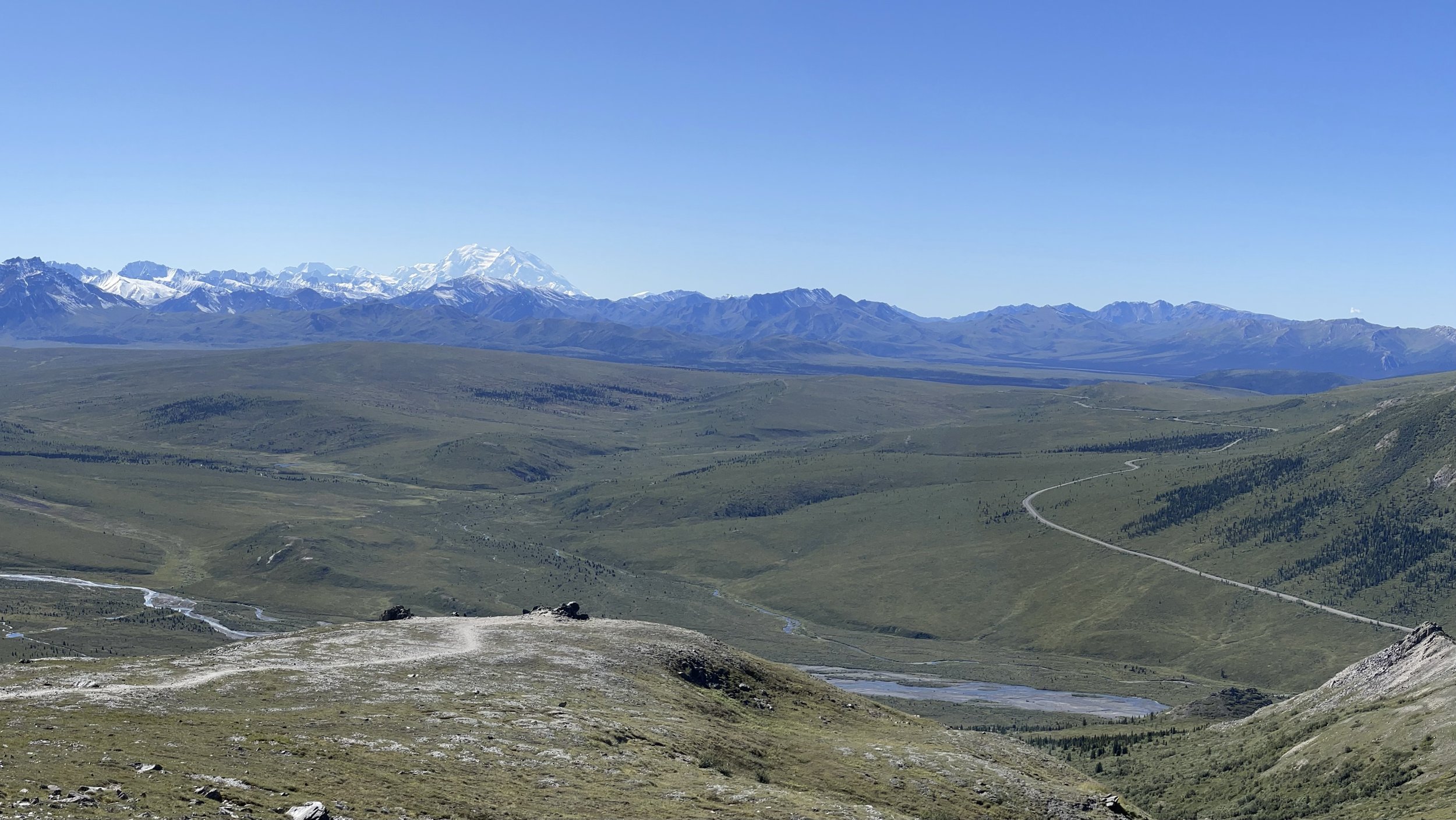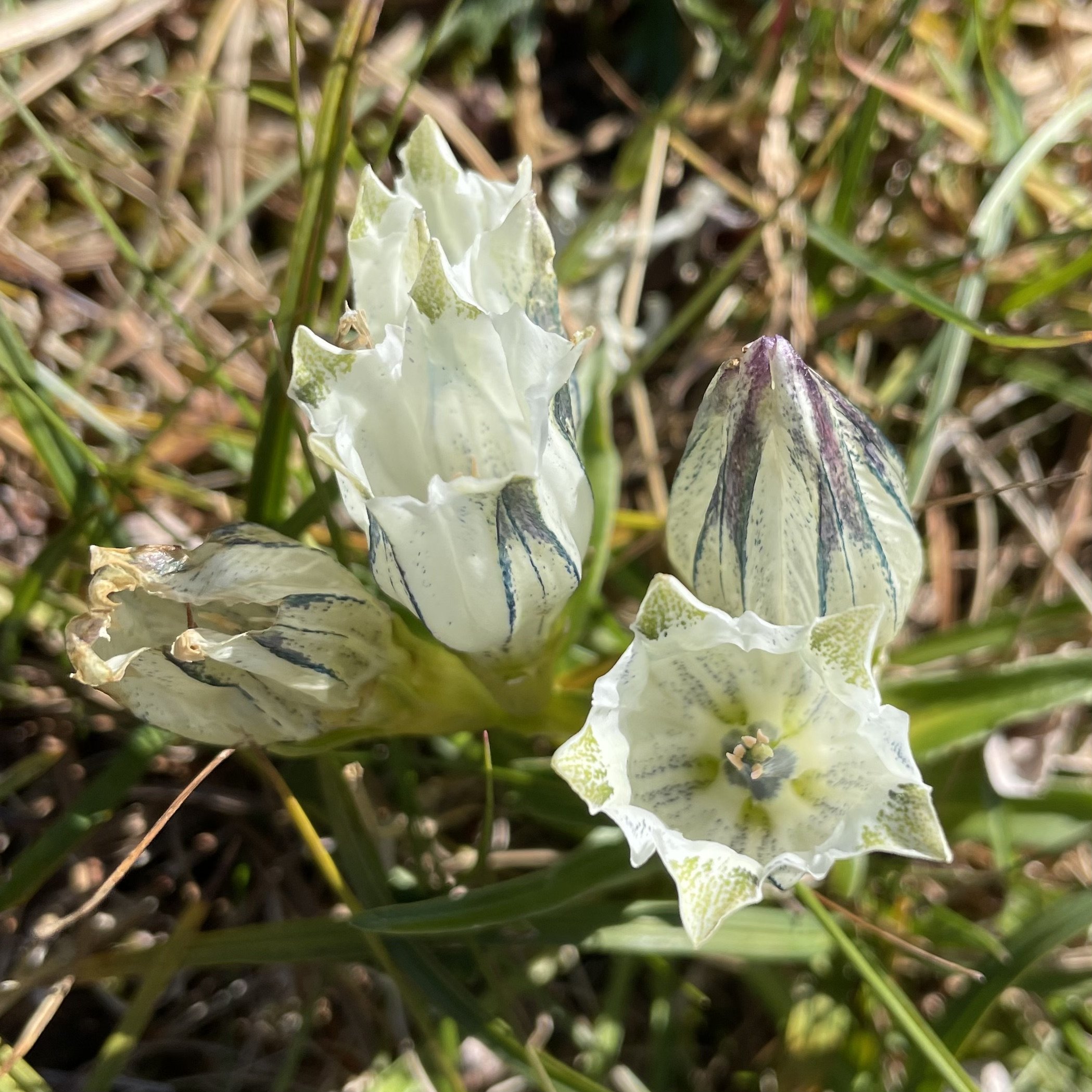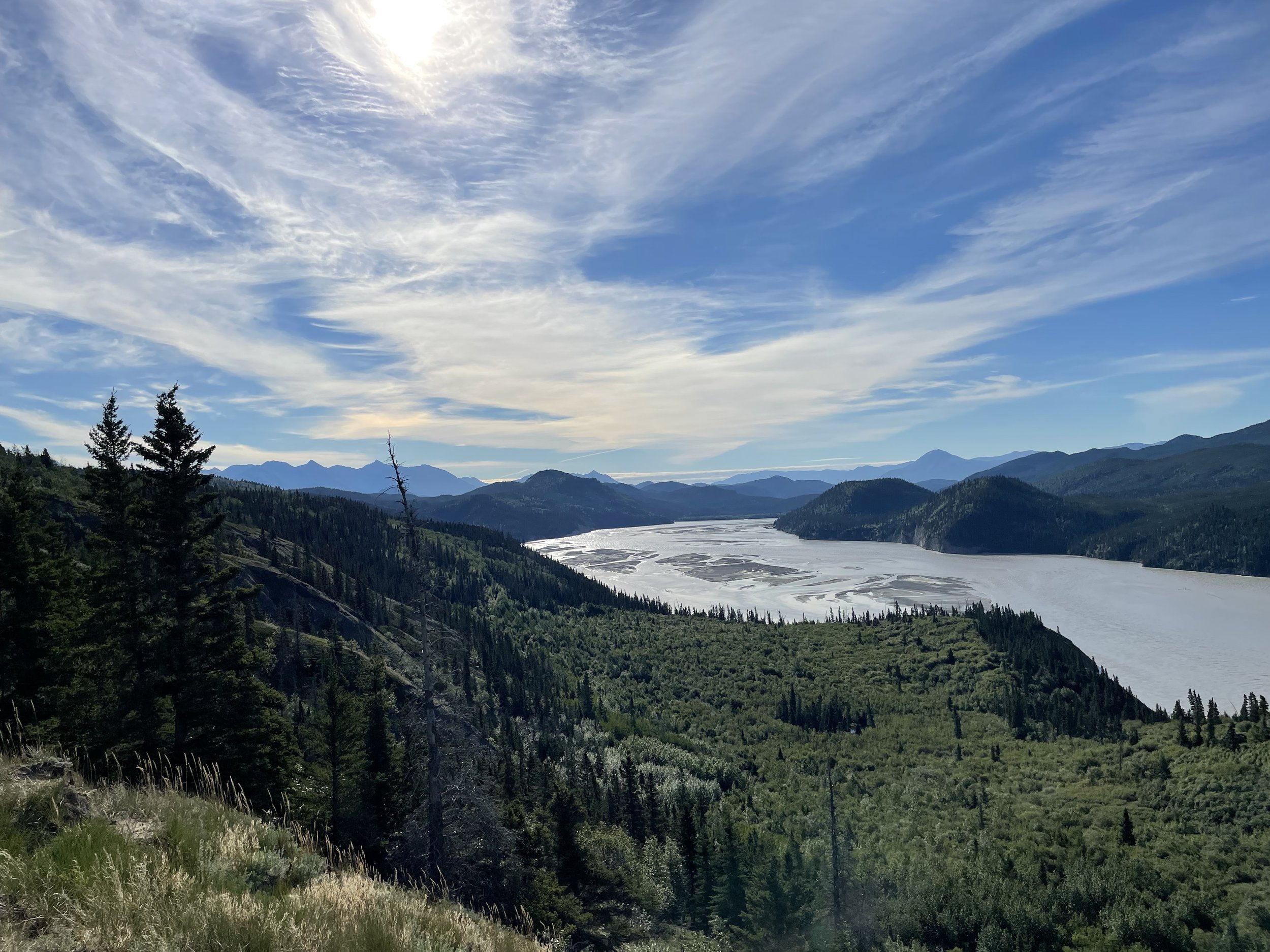We are taking some time off here in Healy, Alaska. We really wanted to camp at one of the campgrounds inside Denali National Park but those spots are hard to get. We got lucky and got a spot for two nights later this week. But we have a few days until then and with the weather turning colder and snow threatening, we decided to treat ourselves to a couple of nights in a motel (our first since Juneau) until we can camp in the park.
This motel doubles as an RV park and this afternoon as we cooked our lunch outside at a picnic table we were treated to the nonstop entertainment of watching the full-sized RVs trying to navigate their way in and out of the cramped and tightly packed campground.
I am sure I don’t need to describe to you the size and mass of these things. We’ve all seen the bus length campers motoring down the interstate either under their own power or being towed by a truck. Now imagine trying to back one of those up into a space perhaps the size of a normal driveway with your partner screaming, whistling, and gesturing in your mirrors all the while.
Once docked, the work truly begins. The RVers must connect the water, sewage, and electric power, slide out the extra rooms, crank up the awnings, and who knows what else? But once done, you have, well, a house, your very own house with all your stuff that you can take with you everywhere you go. I’m not going to claim that I don’t understand the appeal.
At the other end of the visible spectrum are the Sprinter Vans and Roadtreks, full sized vans that contain a bed, a kitchen, maybe even a bathroom with a shower. You can live fully inside but still drive and park with relative ease. My cousin Brian and his wife Karen have one of these and it is wicked cool.
And then below the end of the visible spectrum, down somewhere near infrared, you have us.
We have always been tent-campers but in the fall of 2020 just having retired and with lots of road trips on the horizon, I was ready to get off the ground. Even if sleeping on the ground were comfortable (hint, it isn’t), there isn’t a tent made that won’t leak if it rains long and hard enough. I should know, having slept many a night in a puddle of cold water.
A big RV was out of the question. The big vans were tempting but they are not inexpensive and they are not great on fuel. Finally, we considered a teardrop trailer. For a long time, I thought these would be the way to go. We even visited a company that hand-crafts beautiful teardrops campers in Grand Junction, Colorado before concluding it was not for us.
First of all, we would have had to buy a new car to tow the thing. Our Honda Civic is not up to the task of towing even an ultra-light trailer. Second, I didn’t like the idea of towing something up and down narrow mountain passes, though I am sure I could have grown comfortable with it with practice.
Where, we wondered, were today’s VW Westphalia Campervans?
That’s when we found Oasis Campervans located in Broomfield, Colo. They will take your off-the-shelf minivan and turn it into a habitat on wheels.
Our ‘rig’ is a plain ole Toyota Sienna minivan, the quintessential soccer mom car with all the rear seats removed. In their place, Oasis constructed a bed platform, a pivoting table, and a teardrop style galley kitchen under the rear hatch. The kitchen holds our stoves (yes, we have more than one), two pans, three pots, various cutlery, utensils, spices, and cooking basics (olive oil, vinegar, soy sauce, Tabasco, even a jar of hoisin sauce).
We have a 500-Watt mobile battery that recharges when we drive and can easily power the phones, the computers, the electric kettle, and the coffee grinder for days on a single charge. A 5-gallon jug supplies all the water we need for a day or two and can be refilled wherever there is a spigot.
Each of us has our own compartment for our clothes and personal items, and two other compartments house the bedding and a pantry for food stuffs. A near full-sized mattress (with the emphasis on ‘near’) folds away during the day.
For things used less often there are panels that offer access to the area where the third-row seats formerly folded down. We call this the “down under.” This is where we keep things like the tent, backpacks, hiking books, and my down jacket, which I pulled out of its stuff sack for the first time yesterday as the temperature dropped to near freezing.
There are blackout curtains for privacy and for blocking out the sunlight, essential when the sun wasn’t setting until close to midnight.
We have a pop-up screen room that has proven invaluable when it was raining or the mosquitoes were fierce.
And yes, we’ve been living in this thing full-time for the last two months.
The advantages of such a set up are numerable.
When we are not camping in it, the Sienna functions as a second car, albeit one with a seat for just one passenger. It drives like a car, which is basically what it is. Not as nimble, to be sure, as the 6-speed manual transmission Civic, which is the daily driver at home, but still quick to accelerate, easy to change lanes, and a breeze to parallel park anywhere even with the bikes on the back. It’s V-6 engine is frugal, with fuel getting 28 mpg on the highway, not insignificant when we were paying close to $7 per gallon in Canada. And it is a Toyota and thus far has been virtually trouble free throughout the more than 10,000 kilometers we’ve driven thus far.
It is cheaper to camp. Most campgrounds charge less for sites that don’t include power, water, or sewage hook-ups. We can camp anywhere a tent can go. Even campgrounds that are full will usually find a spot for us.
It is absolutely stealth. From the outside, it is a boring, silver minivan and nothing else. Though we have not done so, I have no doubt we could camp on a residential street or in a parking lot and no one would suspect that people were sleeping inside. Only the bikes on the back suggest any kind of frivolity.
But as with everything there are tradeoffs.
It is small. This is not a house. It is a tent on wheels. At night when sleeping in my preferred position, on my stomach with my hands under the pillow in front of me, my feet hang off the end of the mattress. I can almost sit up straight when in bed, but not quite. When in day mode, you can sit comfortably in the back of the van but it is not possible to stand up.
One must be very disciplined about what one brings along. With three multi-week trial runs before the Alaska trip, we had a chance to refine the ‘must bring’ list. Yet I still brought things I have yet to use. I haven’t worn my hiking boots once so far (my everyday shoes are trail shoes and have been sufficient for all the hiking we have done). I brought several pairs of shorts, I haven’t needed and have more socks and t-shirts than required. I was prepared to go up to ten days without washing clothes but we’ve been able to do laundry every week.
Unlike with an RV, we are basically living outside, albeit with a dry, pretty comfy place to sleep. Cooking is outside too, though I have been known to use the single burner Coleman stove under the open hatch when it was raining or very windy.
There is no black water tank to empty because there is no bathroom. This means that if I need to go in the middle of the night (I am 60 years old, I always need to go in the middle of the night), I am trekking down to the washroom sometimes in the rain. On the plus side, I have seen some astonishing skies during these middle-of-the-night promenades.
It is a process to change the van from day mode to night mode taking perhaps 10 to 15 minutes to complete. The big RVs, of course, can leave the bed set up all the time. Then again it appears to me that they can often take up to 30 minutes just to park and hook-up those things.
On our next trip, no doubt, we will tweak the equipment list a little, leaving a few items behind and bringing one or two others we could have used. But I don’t see us changing to another vehicle anytime soon.
For one thing, other than hitchhiking, this mode of travel may be among the most frugal possible, and frugal means longer trips. I am, of course, tracking all of our expenses meticulously. Once we are home, I’ll enumerate the exact costs in excruciating detail for your consideration.
After we leave Denali, we head to Fairbanks to get the oil changed and the tires rotated and then sometime the following week, we will turn south and begin the long journey back along the Alaska Canada Highway through Yukon, British Columbia, and across the Western U.S. toward home.
I don’t think it will happen but we were planning stopping by the snowy woods of North and South Dakota on the way back to tick off the final two states I haven’t visited. It’s tempting…
but I have promises to keep
and miles to go before I sleep
I mean kilometers to go before I sleep
in a real bed.







